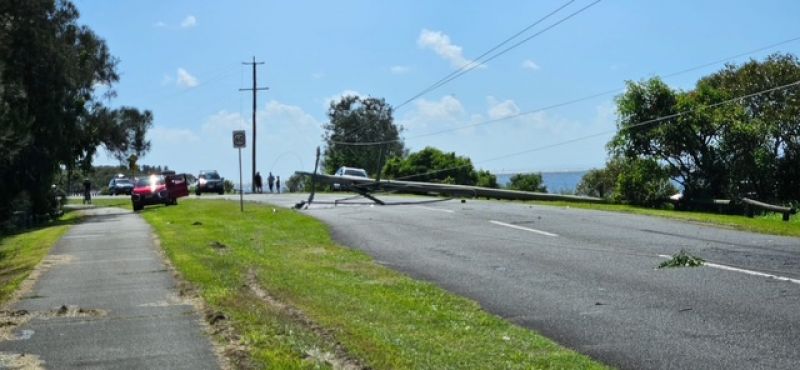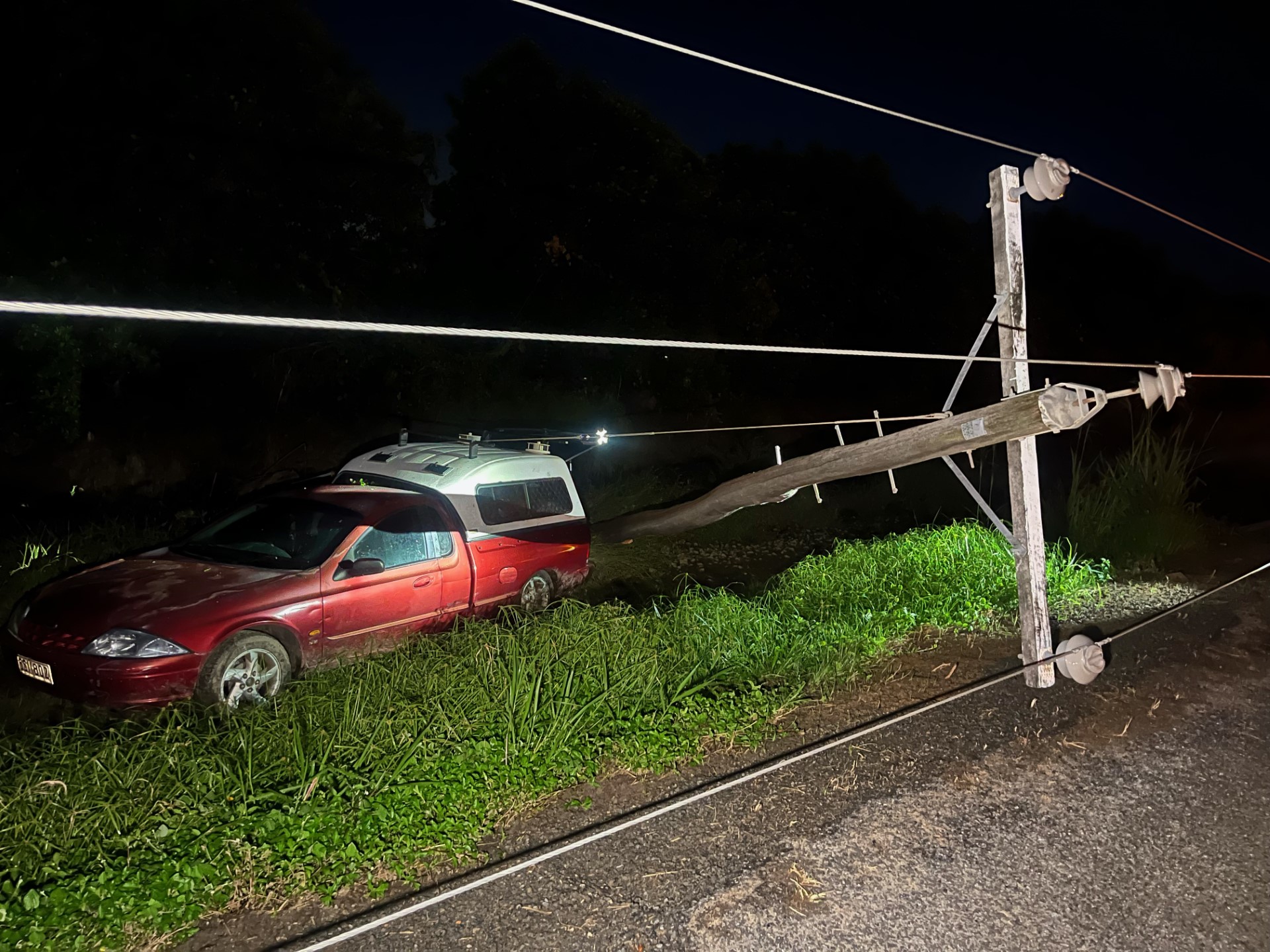16 April 2025
Stay. Call. Wait: a powerline safety message for drivers
As Easter approaches, Queenslanders will be gearing up for the long weekend and hitting the roads in droves.
Would you know what to do if you accidentally hit a power pole and powerlines ended up on your vehicle?
Work group leader Luke Navarro stressed the importance of being equipped with lifesaving advice.“
Last year, 732 vehicles contacted the electricity network in Queensland, causing power outages to more than 172,000 customers,” Mr Navarro said. “In some cases, powerlines ended up draped over vehicles or became entangled in electrical equipment.”
Knowing how to respond in these situations is vital and the message is clear. The safest course of action can be summed up in three simple words: STAY, CALL, WAIT.
- STAY in the vehicle
- CALL triple zero (000)
- WAIT for emergency services and crews to arrive.
Mr Navarro explained that attempting to exit a vehicle in contact with live powerlines can be fatal.
“Electricity takes the shortest path to the ground. If someone steps out of the vehicle, they complete the circuit, which could result in life-threatening injuries or even instant death,” he said.

Bystanders are also urged to resist the natural instinct to help.
“Although their intentions are good, getting too close to the vehicle or touching it could put them at serious risk of electric shock or worse. The safest thing they can do is stay at least 10 metres away and call triple zero,” Mr Navarro said.
What if you need to get out because of another emergency?
In rare cases, such as a fire, where occupants must exit the vehicle, Mr Navarro recommends a very specific method to ensure safety:
- Open the door and look for clear ground free of wires.
- Keeping your feet together, jump as far away from the vehicle as possible, ensuring you don’t touch the car and the ground at the same time.
- Once on the ground, shuffle your feet or, in the spirit of Easter, hop like the Easter Bunny with your feet together until you’re at least 10 metres away from the vehicle and any wires.
After the incident
From a technical perspective, vehicles exposed to live electricity should not be driven for at least 24 hours and no one should approach the vehicle during this time.
“High voltage can cause a chemical reaction in the tyres, potentially leading to explosions, and it can also damage the car’s electronics,” Mr Navarro explained.
“If your vehicle has been exposed to live current, contact your insurance provider and have it thoroughly inspected by a qualified mechanic before driving it again.”
This Easter, let’s ensure that safety is a priority on the roads. By remembering STAY, CALL, WAIT, you can protect yourself and those around you in the event of a vehicle-related electrical emergency.

